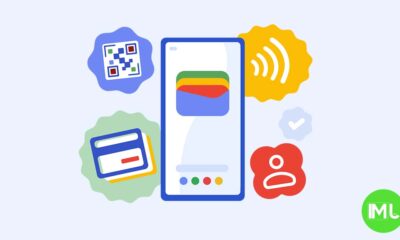Google launches body temperature feature for Pixel Thermometer app in the US
Google has introduced a new feature with Pixel Thermometer update for its Pixel 8 Pro smartphone, which lets you measure your body temperature using the device’s sensor. The body temperature feature is currently only available in the US as the company has received the necessary approval.
To use it, you need to have an active SIM or eSIM issued from a U.S.-based carrier. In addition, you just need to update the Pixel Thermometer app to version 1.0.597731989. The app will ask you to grant it access to the camera permission, as it uses the LDAF (laser detection autofocus) sensor to measure your temperature.
Follow our socials → Google News | Telegram | X/Twitter | Facebook | WhatsApp
To measure your body temperature, you need to select your age range and remove any accessories that cover your forehead. Then, you need to place the center of the camera bar near your forehead and move it to your left and right temple, following the voice and vibration guidance. The app will display your temperature and let you save or reset it.
Pixel Thermometer app will store your measurements for 7 days before deleting them automatically. You can also save them to your Fitbit account or open the app from the Fitbit app.
However, Google warns that the feature is not intended for medical purposes and may not be accurate or safe.
Apps
Android Auto users get hazard reporting feature in the US

Google has rolled out a hazard reporting feature for Android Auto in the US, which was previously available for Google Maps on Apple CarPlay. The new update brings the ability to report road incidents directly from their car screens for Android Auto users.
This long-awaited update allows drivers to quickly share important information without having to use their phones. It notifies others about accidents, traffic jams, and even speed traps in real time.
Before this update, drivers could only report issues using the Google Maps app on their phones. While the Waze app along with Google Maps on Apple CarPlay already had this feature, Android Auto users felt left out.
Now, with the new Android Auto update, drivers will see a triangle-shaped hazard button below the compass on the Google Maps display in their cars. By tapping this button, they can report things like traffic jams, lane closures, and crashes.
Moreover, the app provides prompts during navigation to confirm the status of reported incidents. Notably, the hazard button might not show up if the Android Auto layout doesn’t have enough screen space for Google Maps. Some users have reported about the visibility of it.
Despite this limitation, the hazard reporting feature of Android Auto users helps drivers communicate important information about road conditions to make journeys safer. As more Android Auto users get this feature, the company is expected to enhance it in the coming days.
One UI 7 could revive Multi Sound for Android Auto disabled in One UI 6.1.1
Android 15 enhances Volume menu with Pixel Buds Pro 2’s Noise Control
Google has recently enhanced the Pixel Buds Pro 2 experience with a new feature called Noise Control. Now, the search giant has added a Noise Control option in the Android 15 Volume Menu, which allows users to manage their sound settings more conveniently.
The new Noise Control feature of Android 15 makes it easier to customize your listening experience without needing to open the Pixel Buds app. This feature is compatible with both the Pixel Buds Pro and Pixel Buds Pro 2 models (via 9to5Google).
To use Noise Control, you need to simply adjust the volume with the physical buttons on your device, tap the three dots at the bottom of the slider, and click on Noise Control. This will open the feature with three options – Noise Cancellation, Off, and Transparency. From here, you can adjust it as you want.
Android 15 features a redesigned Volume menu that appears at the bottom of the screen. Initially, this major update did not support the Pixel Buds Pro, but a recent update has added this function.
In addition to the Noise Control option, the Android 15 Volume menu includes options for Spatial Audio and Live Caption. The Spatial Audio lets you choose between Fixed and Head Tracking modes while Live Caption is for captioning turned on or off.
Aside from this, Google has recently made it easier for users to manage their Pixel Buds and enjoy a better audio experience. They can add the Pixel Buds app to their home screens for easier access.
Google’s Pixel Buds app now easily accessible on Pixel phones
Capture and Discover: Google Lens adds video search feature
Introduced at I/O 2024, Google is now rolling out a new video search feature of Google Lens. This feature lets users explore video content based on clips they capture. It aims to help people interact with their surroundings in a more engaging way.
With the new video search feature, users can record short videos of things/content they prefer to watch or learn about. It provides an amazing experience to users by connecting static images and dynamic video content.
After capturing the clip, users can ask questions related to the video. Google Lens will then provide search results, including AI-generated answers in areas where this is available.
To use the video search feature, just open Google Lens, hold down the shutter button to record your video, and start asking your questions vocally. This makes it easy to find out about things or places whenever you’re curious.

As more people get this feature, it could change the way we find information. Whether you’re interested in a specific object, a landmark, or a scene, Google Lens is making it easier than ever to find the answers you’re looking for. Make sure to keep your apps and software up to date to enjoy new features.












